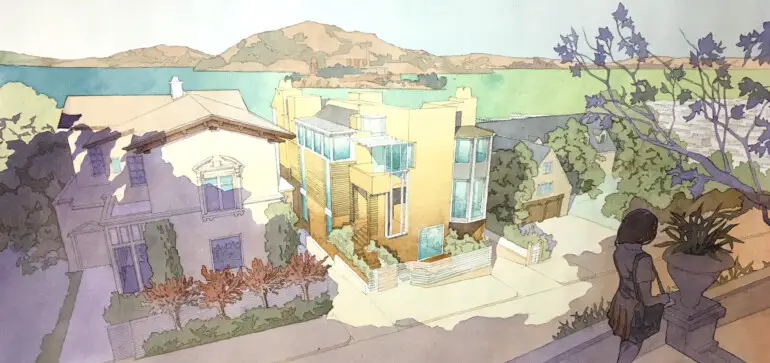Gazing upon Geddes Ulinskas’ hand-painted watercolor architectural renderings tends to evoke a sense of calm in the viewer, and an appreciation for his attention to detail. It’s the same feeling one gets when experiencing the grand residential and commercial spaces the San Francisco-based architect has designed, and that’s not a coincidence. Ulinskas, who once dreamt of becoming a professional artist, founded Geddes Ulinskas Architects in 2005, where he applies his passion for artistry to both crafts. His firm has completed numerous projects throughout the Bay Area, as well as in Los Angeles, New York City and Hawaii, and Ulinskas always gifts his clients with watercolor renderings upon completion. Here, the architect shares how a gift from his aunt, Holly Hobbie, the author of the Toot & Puddle children’s books and creator of the eponymous character, sparked a lifelong appreciation for art; what lead him to pursue a career in architecture; and how he creates his exquisite watercolor renderings.
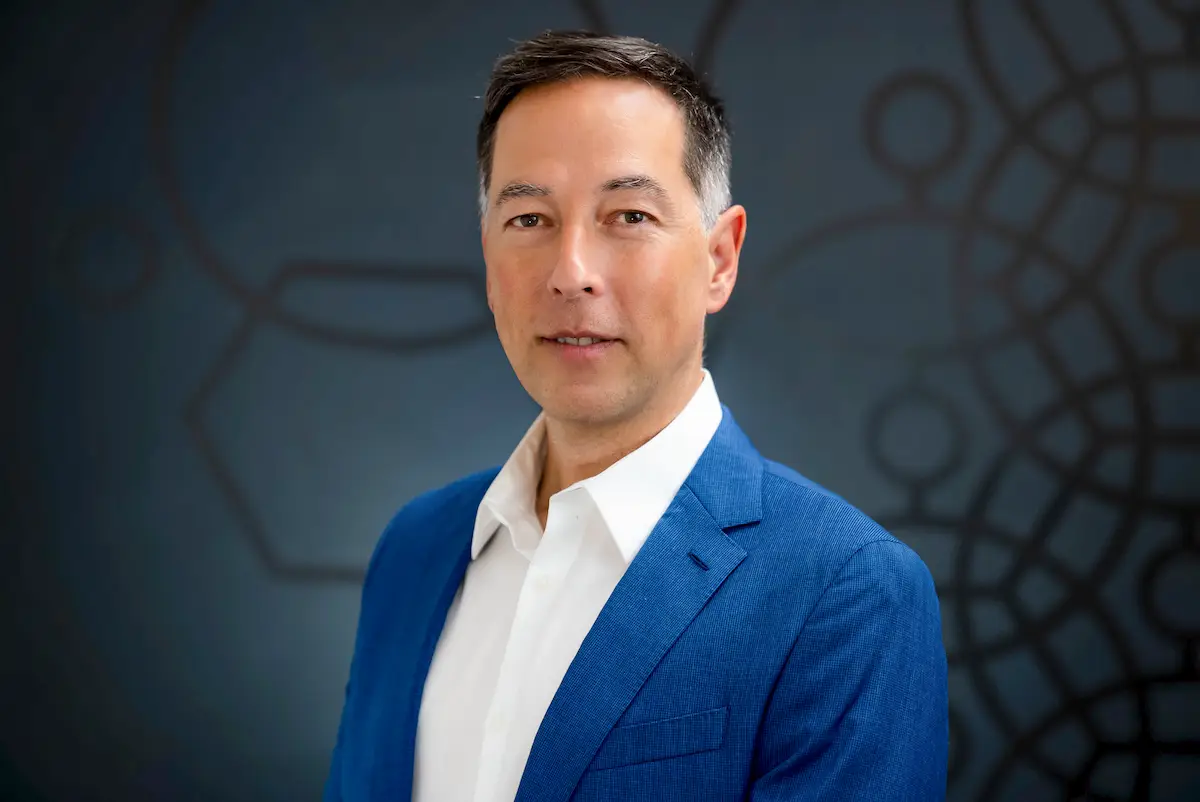
Tell us what first attracted you to the world of art.
For as long as I can remember, I’ve loved drawing. When I was in the 4th grade, my aunt, Holly Hobbie, a watercolorist and illustrator, gave me my first watercolor set, and I was hooked. Later, I took classes with Michael Reardon to hone my craft. I’ve always been artistically inclined but having these mentors in my life has been incredibly enriching.
Did you originally intend to pursue a career as an artist?
I did, yes! I ended up applying to Pratt. Each year, Pratt holds a scholarship competition where students from all over the country enter to win a full ride to the school. Since I loved to draw, I was set on applying for their art program, but I missed the deadline and decided to apply for architecture instead with the intention that if I won, I’d eventually switch over to art. I like to joke that I stood in the wrong line, as I didn’t know a thing about architecture. Somehow though, I won first place and was granted a full scholarship to their architecture program.
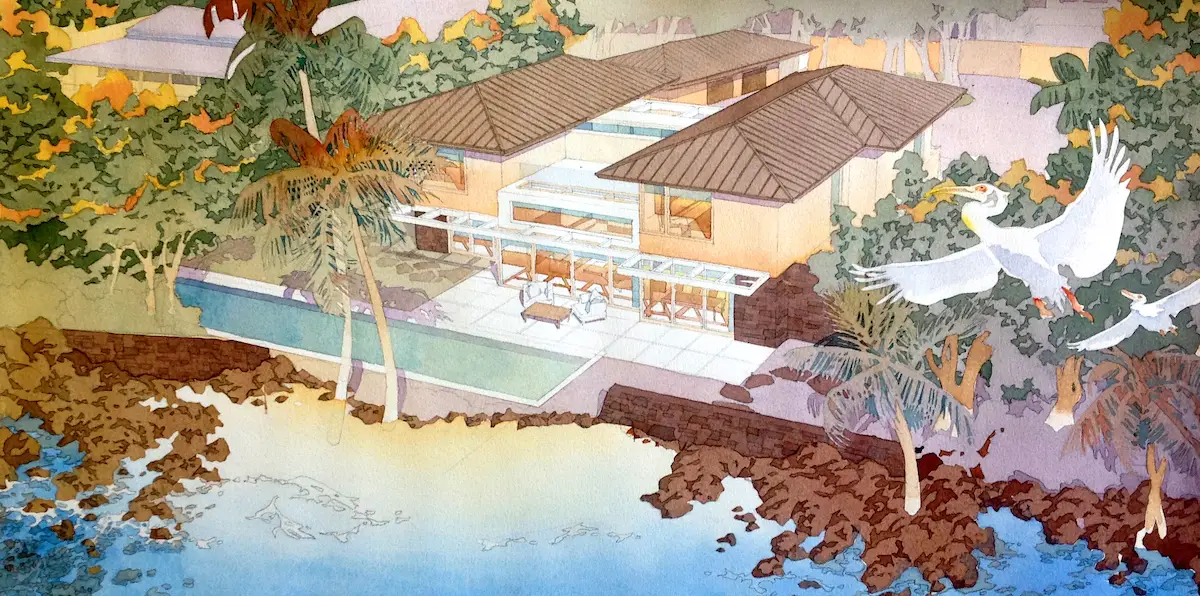
What motivated you to switch courses to become an architect?
I like to say that I found architecture by accident. I grew up in La Jolla, California, a beach town, so naturally, I loved surfing, skateboarding and spending time by the water. I also loved to draw and was fairly certain I’d become a commercial artist or illustrator one day. In La Jolla there is this building called the Salk Institute designed by Louis Kahn, and as a kid, I can remember looking up at it in awe; it is magnificent.
In very serendipitous fashion during my freshman year architectural history class, one of the first books I opened had The Salk Institute on the cover. So here I was, a kid who didn’t know much about architecture now living in New York City, and there was the building that I grew up looking at, and I never knew it was just this incredible piece of poetry. I remembered the way you walk in and how it affected me as a kid and, at that moment, I felt that perhaps I was on the right course after all. The rest is history!
What brought you to San Francisco?
Before coming to San Francisco, I practiced architecture in New York City, but Manhattan was such a dense urban setting — every part of the city was just surrounded by more city. San Francisco is a jewel of a city set in a stunning natural environment. That combination of beautifully crafted cityscape interwoven with hills and bay views ultimately made me feel the Bay Area needed to be my home.
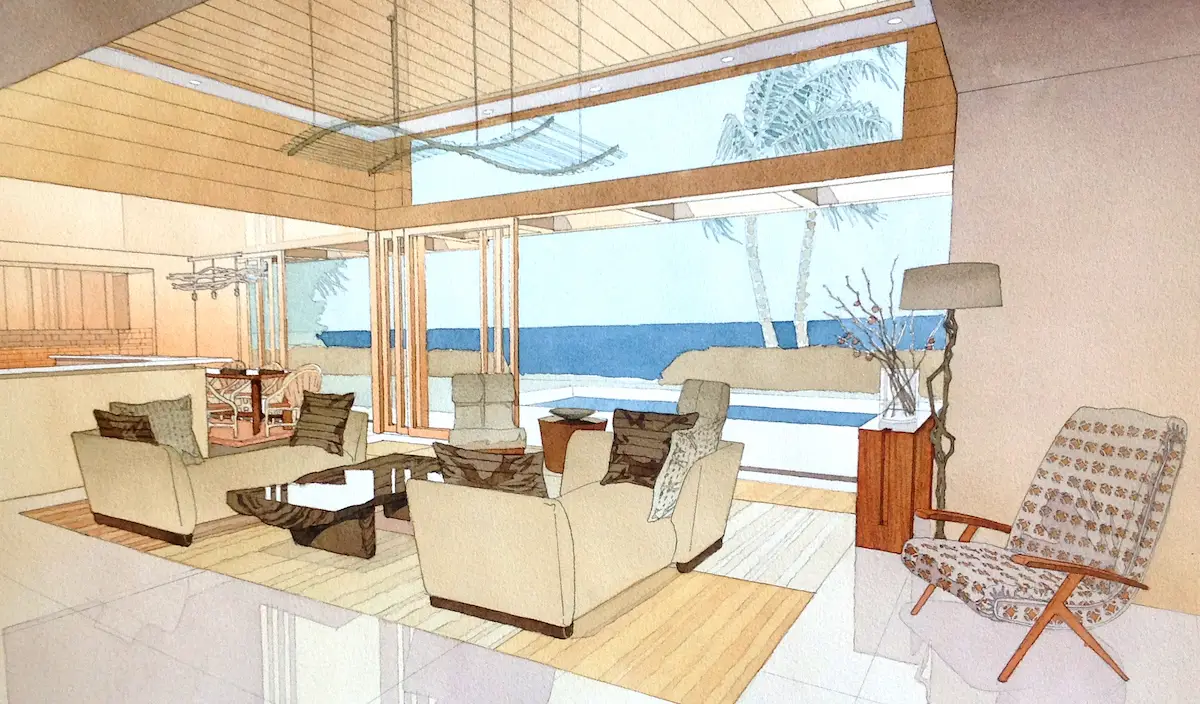
You paint watercolor renderings for every architectural project you embark on; what inspired you to do this?
First and foremost, I enjoy it. It’s a way to achieve a certain feeling for the design that no computer program can emulate. For example, I once worked with a well-known interior designer in San Francisco, and the owner wanted me to look at some options to create a basement gym next to the pool. As I worked through the design, I crafted this watercolor painting of the gym with beautiful reflections in the water and the light. The designer was quite moved by it and felt it was such a romantic representation of a project. The ability to evoke this type of emotion is precisely what I find so intriguing about the craft. It doesn’t try to show you the exact color scheme of the stone or wood but rather the possibility of what can be achieved through the design. I also find that it provides a sense of completion for clients. Most of our projects are years in the making, so it’s a special gift for them to receive at the end of our working relationship after so much has gone into the project.
What’s your process like when painting the watercolor renderings?
I start each process by creating an outline and planning the colors, shadows and highlights for the watercolor. Most of the time, I already have the rendering mapped out in my head with a very rough idea of how I’ll use color to highlight the focal points of the space. I don’t have a particular stage in the process where I work on my renderings per se, as I like to do different iterations throughout the whole process. I start with early loose renderings for when we’re going through concepts and then detailed finished ones for when we’re homing in on the final design. Each rendering takes me three to four hours to complete.
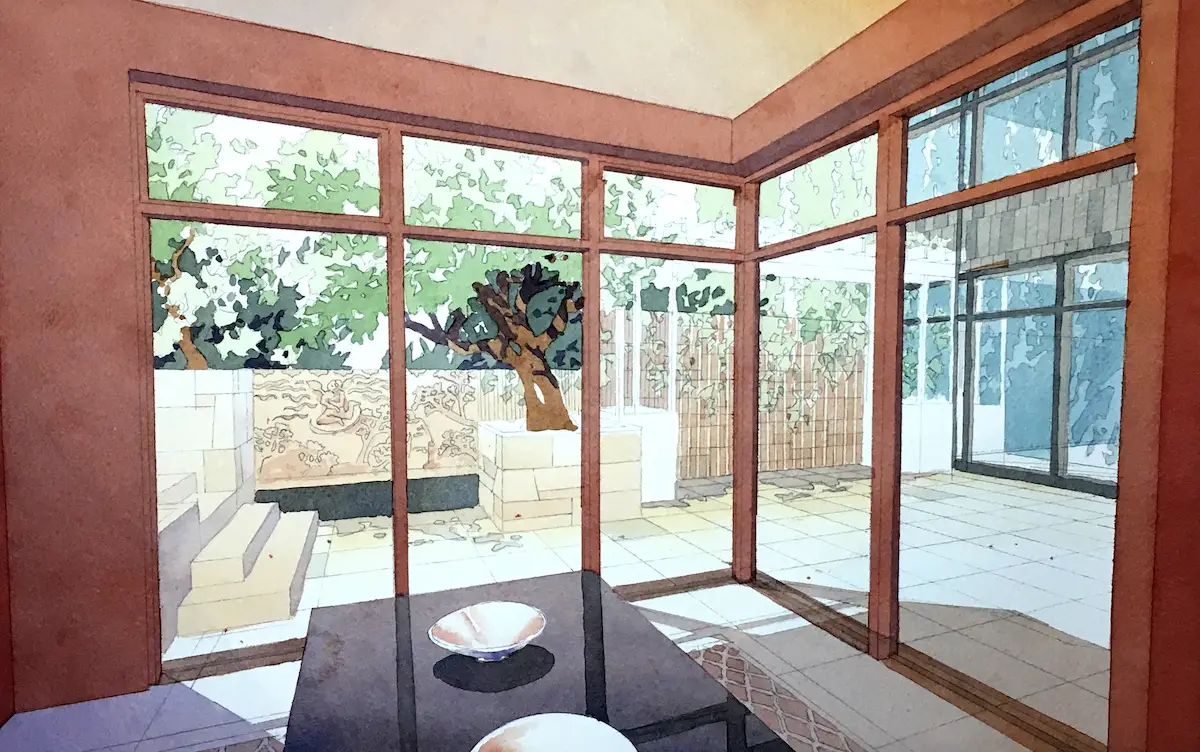
What’s in your kit?
My kit is fairly typical: It consists of mixing wells, tubes of color and paper. My main must-have is cold press 90-pound watercolor paper.
Which artists inspire your work?
So many! I’m endlessly inspired by John Singer Sargent, who was a pioneer in the field. I also find Winslow Homer’s work to be spectacular.
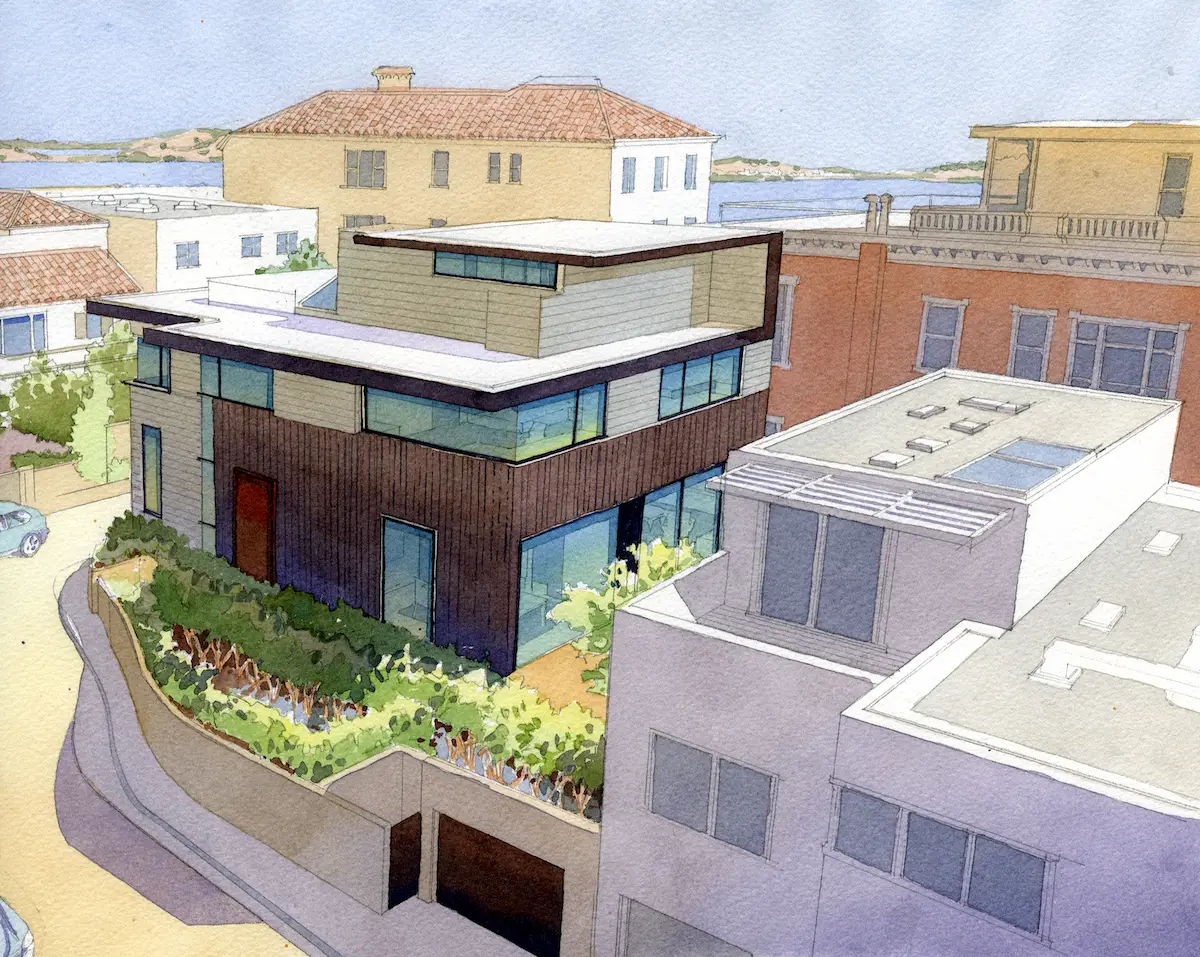
Tell us about the gallery exhibit that featured your watercolor renderings a few years ago.
The Art of Architecture exhibit was quite rewarding to work on. As I mentioned earlier, I find that architectural illustrations and paintings evoke emotion and represent a project in a way that a computer program can’t really emulate. In a world where these programs have taken precedence and have now become industry standard, we wanted to take a step back from the technology and, as a community, retrospectively look at art and the craft as a whole. We collaborated with fellow San Francisco-based architects Andrew Skurman, who showcased drawings of classical buildings, and Ken Linsteadtt, who had a collection of contemporary spaces. It was really special.
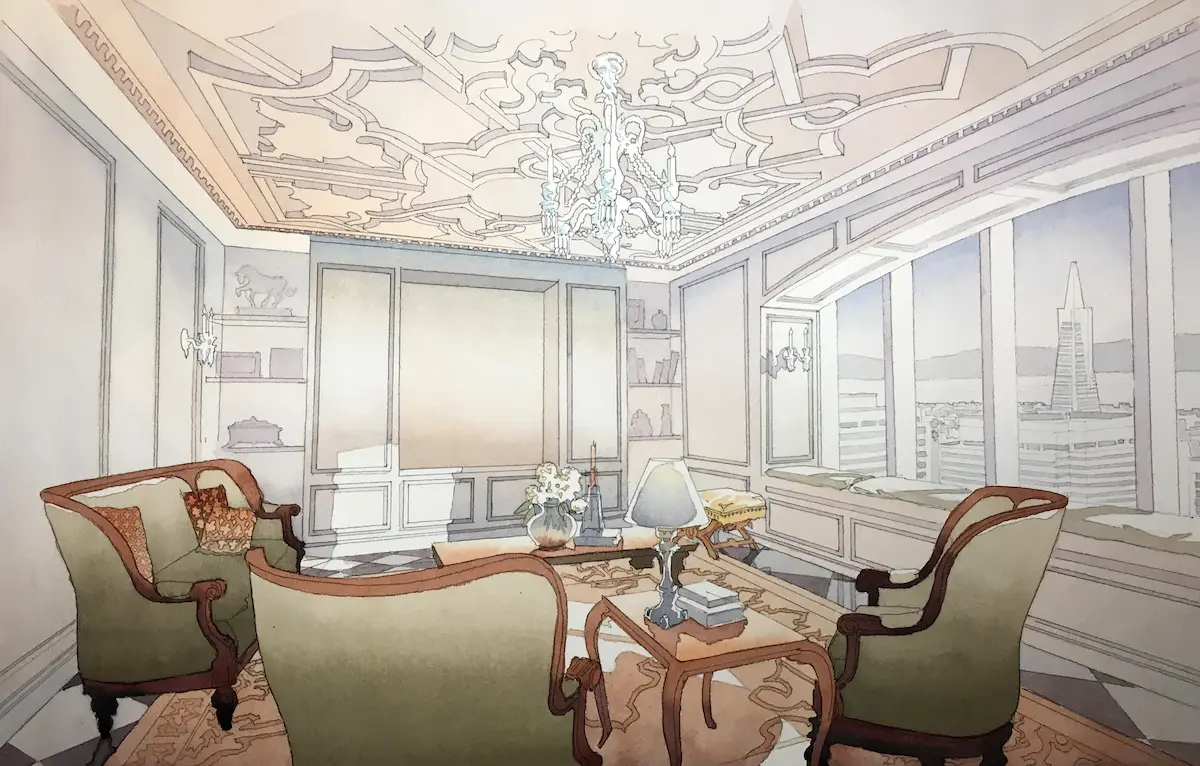
Do you have a favorite rendering you’ve done, and what did you like about it?
I once did a painting for a house that was proposed on the Belvedere Lagoon. It’s an aerial view looking down at the home, and in the corner, I painted two pelicans on a whim to tie it all together. It has this very dreamy, ethereal feel to it that allowed me to dig into the design as a whole and uniquely represent the home.
More recently, I worked on a pool house in Los Angeles. The light in this particular image is soft, and the painting captures this soothing, almost meditative feeling.
How do clients respond to the watercolor renderings?
They’re always so positive. In my realm of work, the clients genuinely want to work with an artist in every sense. They don’t want a technician designing their house but rather someone who is artistically focused. In this sense, when they see me do these hand-painted works of art that reflect what we’ve been envisioning together, they’re thrilled, and they provide a nice sense of completion for our time together.
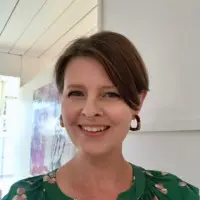
Lotus Abrams has covered everything from beauty to business to tech in her editorial career, but it might be writing about her native Bay Area that inspires her most. She lives with her husband and two daughters in the San Francisco Peninsula, where they enjoy spending time outdoors at the area’s many open spaces protected and preserved by her favorite local nonprofit, the Peninsula Open Space Trust.
